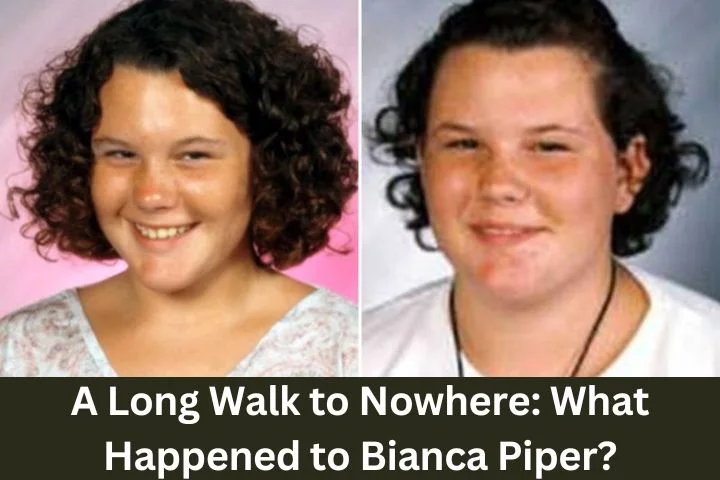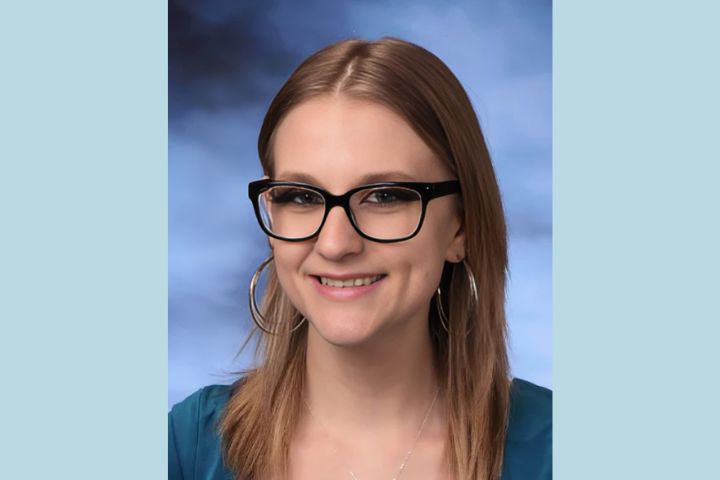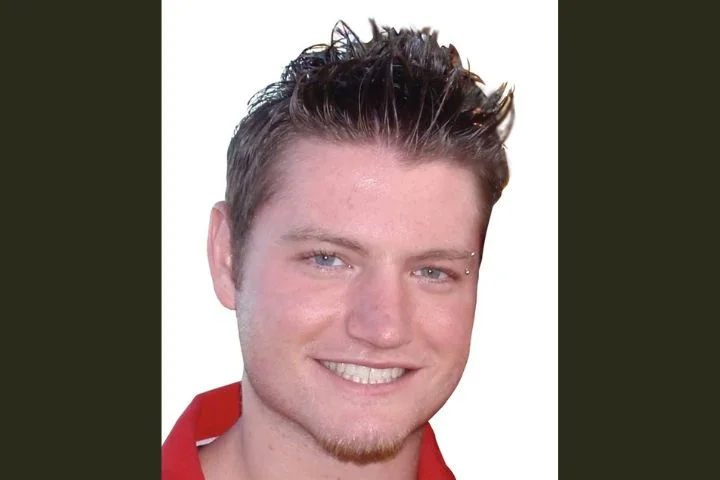When Suzanne Lyall showed up for work on the afternoon of Monday, March 2, 1998, she appeared to be in a good mood. Suzy, who was a sophomore at the State University of New York at Albany, had spent the weekend worried about a midterm she had to take that morning; she was relieved when it hadn’t turned out to be as hard as she expected. As she breezed through the entrance of Babbage’s computer store, located at the Crossgates Mall in Guilderland, NY, she told her boss that she thought she had passed her midterm. Suzy was scheduled to work until 9:00 pm that night, and she left the mall immediately after her shift was over so she could catch her bus back to campus.
The driver of the Capital District Transportation Authority bus that Suzy normally rode recalled seeing her get on the 9:20 pm bus at the Crosswood Mall, but didn’t remember seeing her get off the bus. She would normally get off at the Collins Circle bus stop, just a short walk away from her Colonial Quad dormitory. A classmate thought she saw Suzy get off the bus there at 9:45 pm that night, but wasn’t absolutely certain. She only knew Suzy by sight and had never spoken to her.
Although Suzy had several roommates, she wasn’t particularly close to any of them and they weren’t concerned when she failed to come home that night. They knew she had a boyfriend who lived near campus; though she had never spent the night with him before, it was plausible that she might have gone there.
It was Suzy’s boyfriend, Richard Condon, who was the first to realize that something was wrong. Rich was a couple of years older than Suzy, and they had been dating since she was in high school. They either spoke on the phone or chatted on their computers each night, but he didn’t hear from her at all on Monday night. He was concerned, but thought she might have fallen asleep early. When he couldn’t reach her the following morning, he called and spoke to one of her roommates. He was startled to hear that she had never returned home the night before, and he immediately called her parents.
As soon as Doug and Mary Lyall learned that Suzy was unaccounted for, they knew that something had to be terribly wrong. Suzy was a creature of habit who never deviated from her normal daily routine of work and school. They immediately called the campus police and attempted to report their daughter missing, but the SUNY police did not share their concern. They told them that their daughter was legally an adult, and noted that it was common for college students to take short trips without notifying their parents. Since they believed that Suzy was likely to reappear within a few days, they saw no need to look into her disappearance.
Doug and Mary tried to convince the police that Suzy was not the type of teenager who would take off on her own. The youngest of three children — she had been a joyful surprise to her parents, who thought their days of having children had been over — she was extremely close with both her parents and siblings and called or emailed them on a daily basis. She didn’t socialize much at school, wasn’t the type to attend campus parties, and had never touched drugs or alcohol. She had no history of running away and had never before skipped any of her classes. Despite their pleas, the campus police remained convinced there was nothing to worry about and no need to launch an investigation.
By Tuesday afternoon, there was still no sign of Suzy. She hadn’t attended any of her classes and had missed a scheduled midterm, something that was completely out of character for her. Desperate for anything that might help locate Suzy, her mother decided to call the bank to see if there had been any activity on Suzy’s account. She learned that Suzy had used an ATM twice on the day she disappeared; she got $20 from an ATM on campus that morning and then took out another $20 from an ATM at the Crossgates Mall right before her shift was scheduled to start. Her pin had been entered correctly each time, and the withdrawals appeared to have been made by Suzy herself. She never took more than $20 out at a time, though it was rare for her to make two withdrawals on the same day.
A withdrawal that was made around 4:00 pm on Tuesday afternoon was more concerning to Mary. It had been made at an ATM located inside a Stewart’s convenience store a few miles away from Suzy’s campus, an area of the city that Suzy was not likely to have gone to voluntarily. Only $20 had been withdrawn, though, and Suzy’s pin had been entered correctly. If Suzy had been the person who used the ATM, it was unclear what she was doing in that part of the city and why she had skipped her classes and wasn’t contacting any of her friends or family.
By Wednesday afternoon, even the SUNY police were willing to admit that Suzy was missing under mysterious circumstances, and they finally called the New York State Police about the missing student. Suzy had been missing for almost 48 hours at this point, meaning that time was already against the state police, who knew that the first 48 to 72 hours were the most critical in any missing person case. There would be much debate later about whether or not this time lag adversely affected the investigation and lessened the chances of locating Suzy.
Detectives began interviewing Suzy’s roommates, classmates, and co-workers, but none of them were able to offer much insight into what might have happened to Suzy. It was apparent that Suzy tended to keep people at arm’s length; she didn’t appear to have any close female friends and seemed to prefer computers to people.
Suzy had fallen in love with computers at an early age, and even built her own computer from scratch when she was still in high school. It was through this love of computers that she met Richard; he was the president of a local computer club in Ballston Springs and had invited Suzy to join after chatting with her on the internet several times. Her parents were skeptical of the invitation and didn’t like the idea of Suzy agreeing to meet up with someone she had met online. As a compromise, her father drove her to the club meeting, which was held at a local coffee shop; he then remained in the café until the meeting was over.
Rich was immediately attracted to Suzy, who knew just as much about computers as he did. Suzy, who was naturally shy around boys, took a little longer to realize the attraction, but they were soon a couple. He escorted Suzy to her school proms and the couple spent a lot of their free time together, but Mary didn’t believe that her daughter was as serious about Rich as he was about her. She never expressed interest in any other men, though, and the couple continued to date after Suzy graduated from Ballston Spa High School in 1996.
It hadn’t been a surprise to anyone who knew her when Suzy decided to major in computer sciences in college. Immediately after she graduated from high school, she enrolled at the State University of New York at Oneonta. She completed her freshman year there, but found that their computer sciences program left a lot to be desired. She told her mother that she wasn’t learning anything new; in some cases she seemed to know more than her professors.
After learning that SUNY — Albany had a more challenging computer sciences program, she opted to transfer there for her sophomore year. She seemed to be a lot happier at her new school, though she still struggled to make friends and preferred to spend much of her time either studying or working on her computer. She also had two part-time jobs; in addition to working at Babbage’s, she had recently started working at a computer firm in nearby Troy, NY.
The switch in schools meant that Suzy was much closer to home; Albany was just 30 minutes away from Ballston Spa, while Oneonta had been more than 90 minutes away. Mary was glad to have her daughter so close, but questioned if the switch had been for purely academic reasons. It also meant that she would be much closer to Rich, who lived about 10 minutes away from Suzy’s campus.
Mary had noticed some tension between Suzy and Rich, though Suzy was tight-lipped about any potential problems they might have been having. She had tried to break up with him on several occasions, but each time he had managed to pester her into remaining together. Mary thought perhaps Suzy had started seeing someone else, but no evidence of this was ever found. Between work and school, plus long conversations with Rich each night, there was little time for Suzy to date. She had maintained a strict and predictable schedule until the night she suddenly vanished.
As the investigation progressed, detectives began to wonder if Suzy ever made it back to campus on the night she disappeared. Although a classmate thought she had seen her, the bus driver couldn’t specifically recall Suzy getting off the bus at the Collins Circle stop. All he knew was that she was not on the bus when he made the final stop of the evening. Investigators wondered if Suzy had gotten off at a different stop, either voluntarily or by choice.
After learning of the ATM transaction the day after Suzy was last seen, detectives went to Stewart’s convenience store and interviewed employees there. None of them recalled ever seeing Suzy in the store, and unfortunately there was no surveillance camera covering the ATM, making it impossible to tell who had actually used Suzy’s ATM card. Whoever had used the card had known her pin number; her boyfriend told detectives that he and Suzy should have been the only two people with this information.
Detectives interviewed Rich several times; he had an alibi for the night that she disappeared, and he maintained that he had no idea what had happened to her. Although Mary felt that Rich had been very controlling of Suzy, there was no evidence he had ever physically abused her and nothing to indicate that he was involved in her disappearance. As the investigation continued, he started to feel as if police were focusing too much on him; he eventually stopped cooperating with police and retained an attorney.
The first and only piece of physical evidence to be found in this case was discovered in May, more than two months after Suzy disappeared. A student walking through a parking lot on the Albany campus found Suzy’s Babbage’s ID card off in a corner of the lot; it was extremely weathered and appeared to have been out in the elements for a long time. The parking lot where it was found was in the opposite direction of the route Suzy would have taken from the bus stop to her dorm.
Unfortunately, the card had been outside far too long to be of any forensic use to the investigation; detectives were unable to find fingerprints or anything else that might help identify a potential suspect. They also couldn’t be certain that the ID card had been there since the night Suzy disappeared; it was possible that it had been purposefully placed there at a later time.
Suzy’s family was completely devastated by her disappearance and frustrated by the fact that SUNY police had failed to take the case seriously when she first went missing. They made it their mission in life to make sure that no other parent would have to go through the same thing, and were successful in getting legislation passed that changed the way missing college student cases were handled.
While nearly all college students are legally adults, most of them still have the mindset of a teenager in high school. For many, it is their first time away from home and they are still financially dependent on their parents. Suzy’s parents were instrumental in getting laws passed that required all campus police agencies to have specific plans in place to aid in the immediate investigation of missing student cases. Unfortunately, the changes came too late to help Suzy. Although her case is still considered open and active, little progress has been made and she remains classified as a missing person.Age progression of Suzy (Photo provided by NCMEC)
Suzanne Lyall was 19 years old when she went missing in 1998. She has blue eyes and light brown hair, and at the time of her disappearance she was 5 feet 3 inches tall and weighed 170 pounds. She was last seen wearing jeans, a black shirt, and a black trench coat. She was also wearing a silver frog-shaped ring, a gold bow-shaped ring, and a black cord necklace with a pendant inscribed with “S” in runic script, and she was carrying a black backpack. If you have any information about Suzy, please contact the New York State Police at 518–783–3211 or the SUNY Albany Police Department at 518–442–3131.






